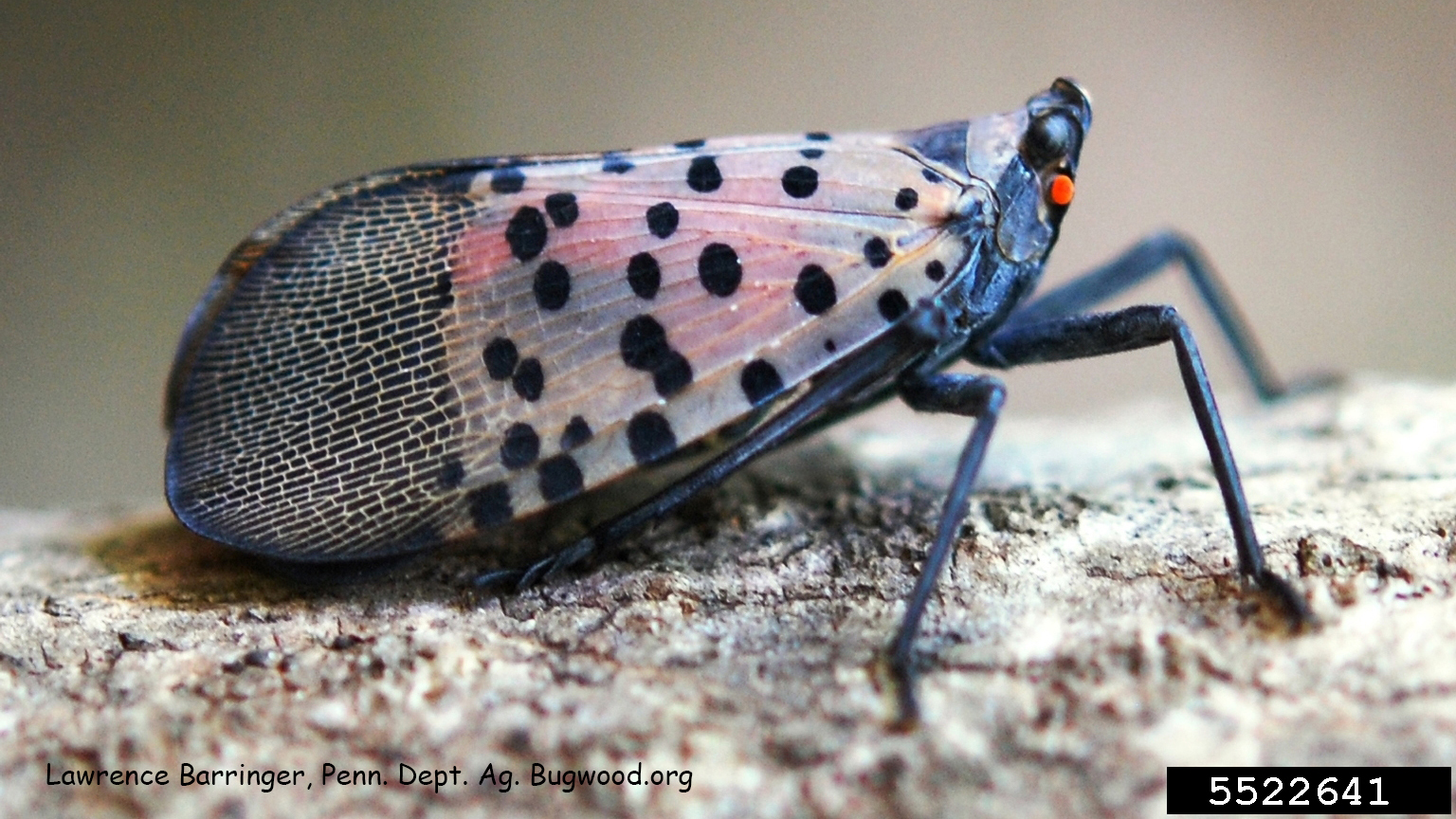Spotted Lanternfly, Vol. 4, No. 25

Spotted Lanternfly
Lycorma delicatula
Order: Hemiptera
Family: Fulgoridae
Learn to spot the spotted lanternfly. This large, strikingly-colored, leafhopper-like insect was first detected in Pennsylvania in 2014. Since then it has spread to 13 counties in Pennsylvania and has also been detected in New York, Delaware and Virginia. Hopefully, the potential for spotted lanternflies to become established in the South is relatively low. Based on its distribution in its native homeland of China, and in South Korea, where it first appeared in 2004, current predictions suggest that it is better adapted to the Northeast and Midwest regions of the US. But because this insect can spread so quickly and easily, via egg masses attached to inanimate objects such as vehicles and lawn furniture, and because its favorite host, Tree of Heaven, already occurs here, it is good to be aware of this pest and know what it looks like.
These big, showy insects are easy to identify; they look like no other insect in the state. Adults are about an inch long with purplish-grey wings covered with black spots, and portions of the hindwings, which are covered by the forewings when the insect is at rest, are brilliant red. The oddly-shaped nymphs are black with white spots when young, but turn bright red with white spots as they near adulthood. The egg masses are flat, irregularly shaped, gray masses that are normally attached to tree trunks or other plant surfaces, but are often attached to inanimate objects such as vehicles, trash cans, ice coolers, lawn furniture, and similar items that can easily, and unknowingly, be moved long distances before the eggs hatch. “Been working here in Pennsylvania for sixteen years, but now we are loading everything up and moving to Tupelo, MS. Gotta report for work Monday morning.”
In addition to Tree of Heaven, which is also a non-native invasive, spotted lanternflies attack a wide range of other trees, including fruit trees like apple, peach and plum, along with hardwood trees and pines in forests and urban landscapes. Grapes are also attacked. Lanternflies have piercing-sucking mouthparts, and cause damage by sucking sap from leaves and stems, producing large amounts of honeydew and sooty mold, and causing plant sap to ooze from damaged areas on affected plants.
See this USDA Spotted Lanternfly Pest Alert (https://www.aphis.usda.gov/publications/plant_health/2014/alert_spotted_lanternfly.pdf) for more information, including photos of adults, nymphs and egg masses.
If you think you have spotted spotted lanternflies in Mississippi, please alert the Mississippi Department of Agriculture’s Bureau of Plant Industry at 662-325-3390, as well as your local county Extension agent.
Blake Layton, Extension Entomology Specialist, Mississippi State University Extension Service.
The information given here is for educational purposes only. Always read and follow current label directions. Specific commercial products are mentioned as examples only and reference to specific products or trade names is made with the understanding that no discrimination is intended to other products that may also be suitable and appropriately labeled.

